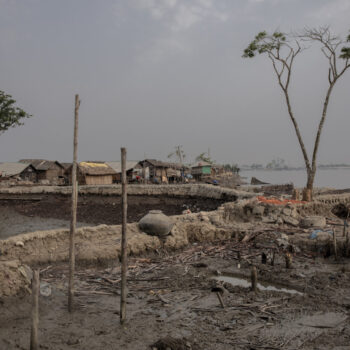With the UN Climate Conference (COP23) taking place this week in Bonn, the Big Shift Global is calling on the World Bank to shift its investments from fossil fuels to clean energy and be more transparent about the impact of its investments. E3G is a research partner for the Big Shift Global coalition.
Last month, President Jim Yong Kim announced the World Bank will report on its portfolio emissions from next year. This was one of the first asks from the Big Shift and is the first time the World Bank will be disclosing aggregate data on the greenhouse gases emitted or avoided as a result of bank-funded projects.
As E3G’s previous analysis in the Huffington Post showed, the World Bank was lagging behind on its emission reporting. In fact, the World Bank has also been lagging behind the private sector, where corporations such as Walmart have been setting science-based targets to reduce emissions.
Development banks are key to driving forward ambition on climate change, and as agents of public money, there needs to be greater accountability in how money is spent. Continuing to use development finance for fossil fuel projects results poses the risk that countries will be locked into lower ambition and unable to meet their Paris Agreement climate goals.
African Development Bank is the only bank left to report on portfolio emissions
After the World Bank’s announcement,
the African Development Bank is now the only remaining bank out of the ‘big six’ multilateral development banks (MDBs) not disclosing its emissions.
Since the Bank is about to release a new climate framework, there is still space for progress.
Portfolio emission reporting in the development banks

Sources: ADB (2017); ERBD (2017); EIB (2014); IADB (2012); Dark Green = Excellent, Green = Good, Orange = Average, Red = None, Grey = Unknown
The Inter-American Development Bank and European Investment Bank appear to be leading the way with the best system for assessing emissions. However, neither of these banks has yet committed to reducing these emissions. They must step up ambition by setting a reduction target.
The Asian Development Bank recently led the way by becoming the first among the group to committing to reduce its portfolio emissions. However, it has not said which sectors will be covered. Moreover, the commitment of “peaking” emissions by 2030 is weak – global emissions need to peak as soon as possible if the world is to have a chance of staying below 2°C of warming.
In the private sector, more than 300 companies have committed to set a science-based target to reduce emissions, and if a company’s value chain emissions are significant, a reduction target for those emissions has to be set as well. Walmart, for example, earlier this year promised to shave a gigaton of greenhouse gas emissions from its supply chain by 2030, while food giant Mars has said it will cut its environmental impact across the supply chain by 67 per cent by 2050.
Following the lead of the Asian Development Bank, World Bank President Jim Yong Kim must commit reducing the Bank’s absolute emissions in line with the science. Development banks must catch up with what the science says is needed or they risk making a mockery of their development mandate.
Not a panacea
While reporting on emissions over the portfolio is a useful tool, it is not a ‘silver bullet’. There are limitations. For example, development banks have a significant funding going through intermediaries and other banks, which are not subject to emissions assessments. Transmission lines are also not always included in emission assessments. For example, World Bank’s private sector arm, IFC, remains indirectly linked to one of the world’s most destructive coal plants – the Rampal coal project in Bangladesh through lending to Indian banks. This coal plant will damage the world’s largest mangrove forest. The Asian Development Bank also proposed a loan to build transmission lines for this same plant.
The Banks must plug these loopholes and ensure project assessments are comprehensive so the impact of harmful projects are exposed. Public development banks must make sure they are not acting as a shield for some of the most social and environmentally damaging lending. As logical next step, the development banks must come together to develop a roadmap to align with 1.5°C of warming – the level needed to save many small islands. They must also exclude funding fossil fuel exploration as it is completely out of line with UN climate goals.
Finally, the development banks should also look at the recommendations of the Task Force on Climate-related Financial Disclosure chaired by Michael Bloomberg, and assess portfolio exposure to high-carbon assets and companies. As pressure mounts on development banks to respond to climate change, the time for better disclosure has come.
This article first appeared in the Huffington Post.
Since this article was published, the EBRD’s methodology document was recently updated for clarity which now notes that the EBRD is collating emissions from all projects over 25kt per year in line with best practices.


